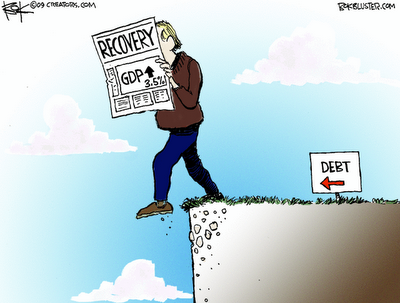
Inner Mongolia, the grasslands are turning to sand
How do plant ecosystems react to rising concentrations of the greenhouse gas CO2 in the atmosphere over the long term? This fundamental question is becoming increasingly pressing in light of global climate change. Researchers from the Chair of Grassland Science at the Technische Universitaet Muenchen (TUM) have now — for the first time worldwide — taken up this issue for grasslands. The scientists found their answers in two unlikely places: in horns of Alpine ibex from Switzerland and in 150-year-old hay from England.

Young ibex (Bouquetin). Ibex store isotopic information in their horns that reflects the water use of the vegetation they consume.
Researchers studying the reactions of trees to rising CO2 concentration in the atmosphere have it easy. Since trees store the carbon they absorb in wood, all they need to do is take core samples from tree trunks. A centenarian oak will reveal how it coped with the incipient climate change over a period of a hundred years in its annual rings. “However, the grassland vegetation we work with is grazed or dies off in a matter of months and decomposes,” explains Prof. Hans Schnyder, who is doing research in the field of grasslands at the Center for Life and Food Sciences Weihenstephan at the TUM. The Swiss scientist nonetheless wanted to establish out how economically grasslands deal with water when temperatures rise and the carbon dioxide concentration in the air increases.
Important in this context is that all plants absorb CO2 from the atmosphere. At the same time they transpire water vapor to cool their sunlit leaves. Both processes run via the stomata, tiny pores in the leaves, the opening size of which plants can regulate. During longer periods of drought plants close the stomata to curb water loss, albeit at the expense of CO2 absorption. Laboratory experiments show that, for a given stoma aperture, an artificial increase of ambient CO2 leads to a temporary increase in the absorption capacity for the gas. However, to ascertain the actual change of water use efficiency in grassland vegetation over the course of the last century, Prof. Schnyder had to find grassland time series comparable in length to those of trees.

Alpine Ibex
This is where the team turned their sights to the Alpine ibex horn collection at the Museum of Natural History in Bern. Ibex store isotopic information in their horns that reflects the water use of the vegetation they consume. The TUM researchers went at the museum collection, which covers the years 1938 to 2006, with a carving knife, to remove tiny samples from the horns. Since ibex horns also have annual rings, the grassland researchers were able to use the samples to draw conclusions about temporal changes in the grassland vegetation of the Bernese Alps where the ibex had grazed.
A unique specimen archive at the research station Rothamsted in England eventually enabled a comparison with a second grassland region. The “Park Grass Experiment” — the longest running ecological grassland experiment worldwide — was initiated in Rothamsted over 150 years ago. Since 1857 specimens have been archived there to allow future generations of scientists to gain long-term insights into the local ecosystem using modern research methods. And indeed, the TUM scientists were able to benefit from the hay specimens dating as far back as 150 years. Once again analyzing the isotope signature, they could infer how the English grassland vegetation had utilized the water over the years.
The Weihenstephan researchers thus determined the individual isotope composition of the grassland vegetation in both the Bernese Alps and in the British lowlands over extended periods of time: more than 69 years based on the horns, and as far back as 150 years using the hay specimens. In a second step this data was lined up with climate data, e.g. air temperature and aridity, of the respective region.
The result:
In both locations the intrinsic water-use efficiency of the grassland vegetation rose over the years. This implies that the plants improved their water storage potential as temperatures rose and the level of CO2 in the atmosphere increased. Based on these results the TUM scientists have now, for the first time ever, managed to demonstrate the long-term effects of anthropogenic climate change on the water-use efficiency of grasslands.

Alpine Meadows
There were, however, also differences between the two locations. In Switzerland the effective water-use efficiency of the Alpine meadows remained unchanged in spite of the increased intrinsic water-use efficiency of the grassland. This was because, overall, the air had become drier and warmer as a result of the climate change. In England the scientists found evidence for this effect only during the fall. In the spring though — which in Rothamsted is no drier today than it was 150 years ago — the water storage potential of grassland vegetation had a real effect. This insight will help to further improve climate simulations. In the past, complex simulation models that included vegetation had to rely on estimates where grassland was concerned. The scientists at the TU Muenchen have now succeeded in prying open this climate research black box.
Source: ScienceDaily (Jan. 10, 2010)














